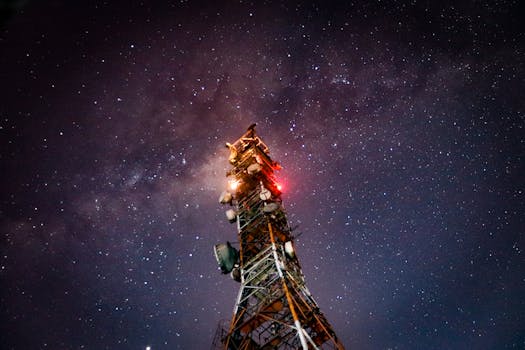
MEO Satellites: Revolutionizing Global Communication with Medium Earth Orbit Technology
MEO satellites, or Medium Earth Orbit satellites, are a type of satellite that operates at an altitude of around 2,000 to 36,000 kilometers above the Earth’s surface. This range is higher than Low Earth Orbit (LEO) satellites but lower than Geostationary Orbit (GEO) satellites. MEO satellites are designed to provide a unique combination of global coverage, high capacity, and low latency, making them an attractive solution for a wide range of applications, including telecommunications, navigation, and Earth observation.
The use of MEO satellites is becoming increasingly popular due to their ability to offer faster and more reliable connections than traditional GEO satellites. With MEO satellites, data can be transmitted at speeds of up to 10 Gbps, which is significantly faster than the 100 Mbps offered by GEO satellites. Additionally, MEO satellites have a lower latency than GEO satellites, with an average delay of around 20-30 milliseconds, compared to 200-300 milliseconds for GEO satellites.
How MEO Satellites Work
MEO satellites work by using a network of satellites in medium earth orbit to provide global coverage. Each satellite is equipped with a high-gain antenna that allows it to communicate with a large number of users on the ground. The satellites are also equipped with advanced propulsion systems, which enable them to maintain their position and altitude in orbit. The signals transmitted by the satellites are received by a network of ground stations, which then forward the data to its final destination.
The use of MEO satellites offers several advantages over traditional GEO satellites. For example, MEO satellites can provide coverage to areas where it is difficult or impossible to install fiber optic cables, such as remote or mountainous regions. Additionally, MEO satellites can offer a more reliable and secure connection than traditional wired or wireless networks, which are vulnerable to outages and cyber attacks.
Applications of MEO Satellites
MEO satellites have a wide range of applications, including telecommunications, navigation, and Earth observation. In the telecommunications sector, MEO satellites can be used to provide broadband internet access to remote or underserved communities. They can also be used to provide backup connectivity for critical infrastructure, such as hospitals, emergency services, and financial institutions.
In the navigation sector, MEO satellites can be used to provide location-based services, such as GPS and mapping. They can also be used to track the movement of vehicles, ships, and aircraft, which is useful for logistics and transportation companies.
In the Earth observation sector, MEO satellites can be used to monitor the environment, track climate change, and predict weather patterns. They can also be used to monitor natural disasters, such as hurricanes, wildfires, and earthquakes.
Challenges and Limitations of MEO Satellites
While MEO satellites offer many advantages, they also have several challenges and limitations. One of the main challenges is the high cost of launching and operating a network of MEO satellites. Additionally, the satellites must be designed to operate in a harsh environment, with extreme temperatures, radiation, and debris.
Another challenge is the need for advanced technology to manage the network of satellites and ensure that they are operating efficiently. This requires sophisticated software and hardware, as well as a team of experienced engineers and technicians to monitor and maintain the system.
Despite these challenges, the use of MEO satellites is becoming increasingly popular, and several companies are investing heavily in this technology. With the continued advancement of technology and the decreasing cost of launch and operation, MEO satellites are likely to play a major role in the future of global communication and navigation.




